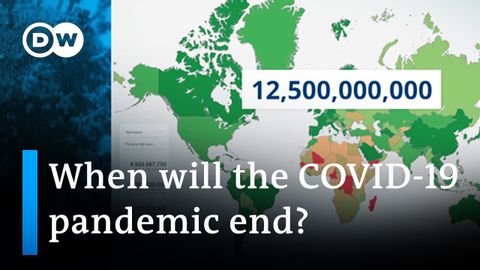世衛組織。COVID-19大流行病的結束指日可待 | DW新聞 (WHO: End of COVID-19 pandemic is in sight | DW News)
 沒有此條件下的單字
沒有此條件下的單字US /pænˈdɛmɪk/
・
UK /pæn'demɪk/
- adj.(疾病)大規模流行的,廣泛蔓延的
- n.大流行病
- n. (c./u.)通道;接近或使用的機會;訪問
- v.t.訪問
- v.t./i.存取(資料);訪問
US /ˈpɑzɪtɪv/
・
UK /ˈpɒzətɪv/
- adj.積極的;建設性的;確定的;正極的;積極的;有利的;陽性的;樂觀的;正數的;正像的
- n.正片
